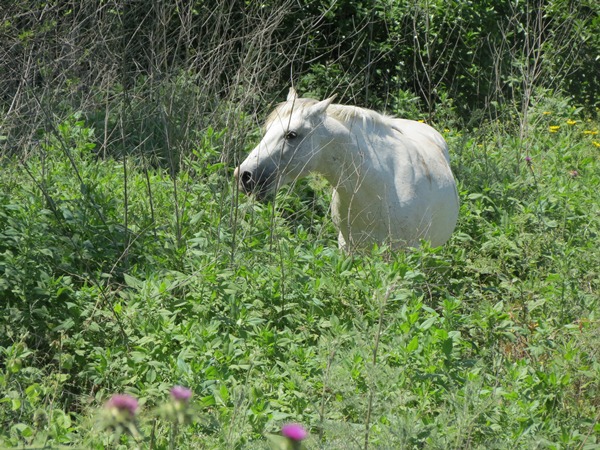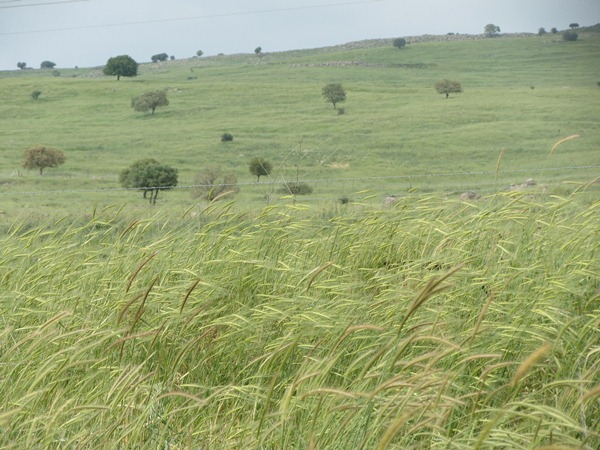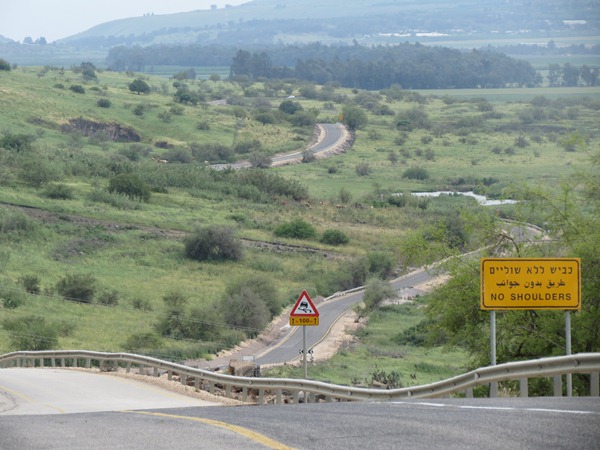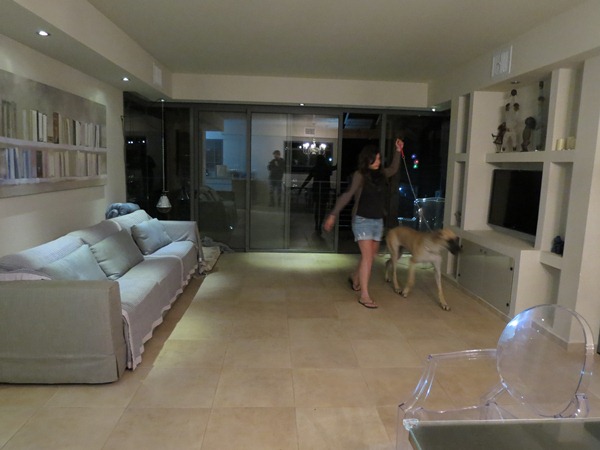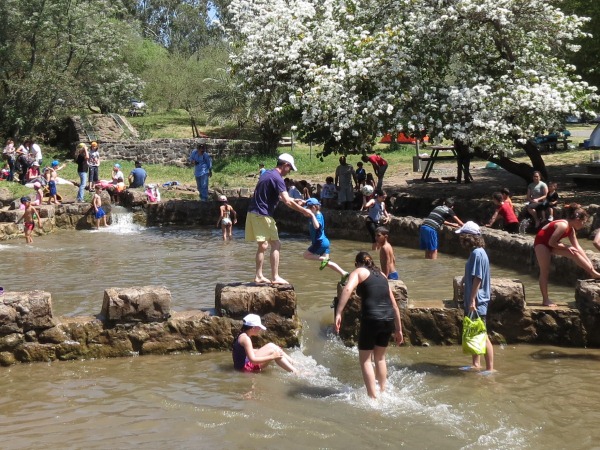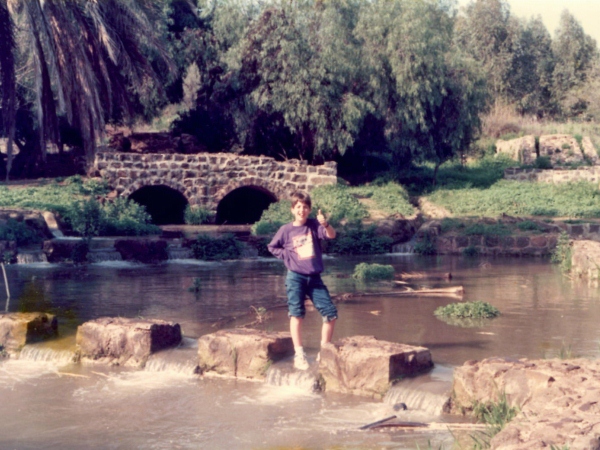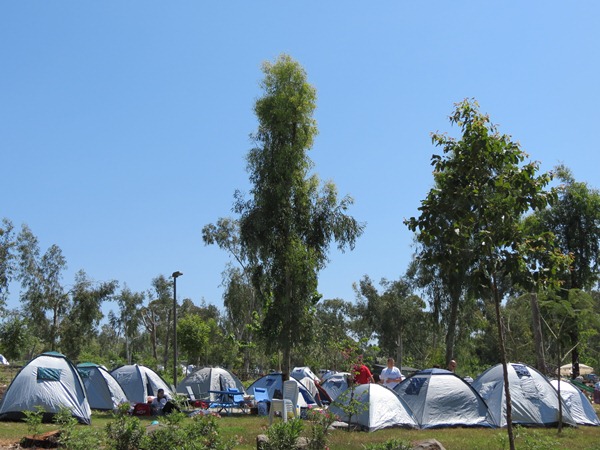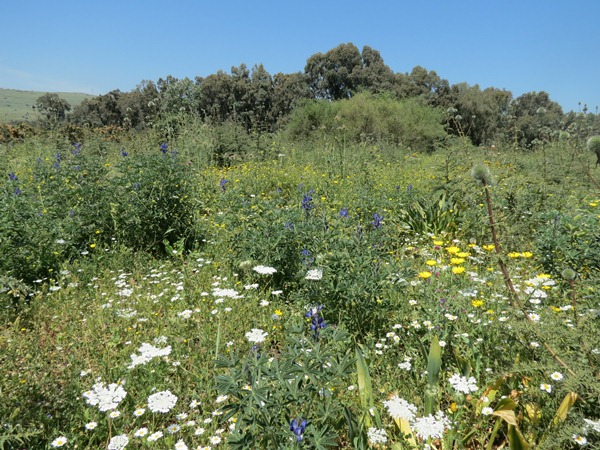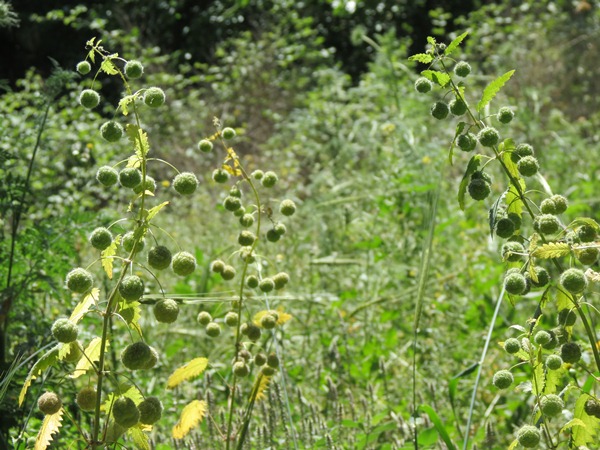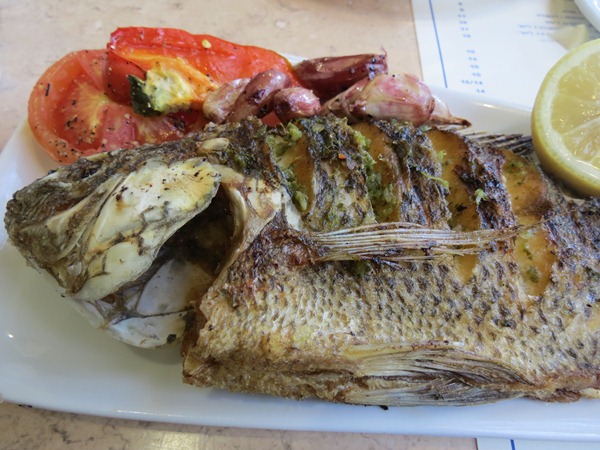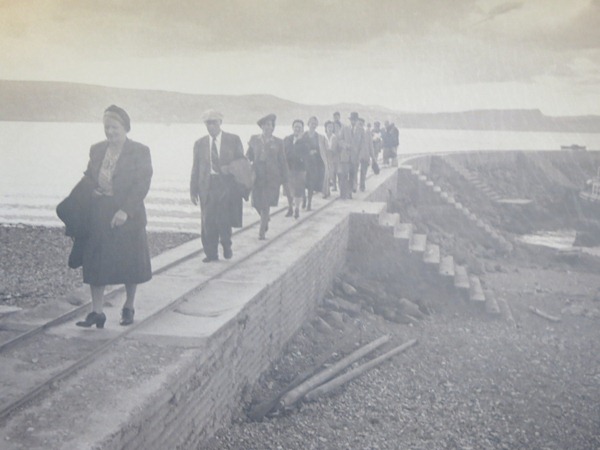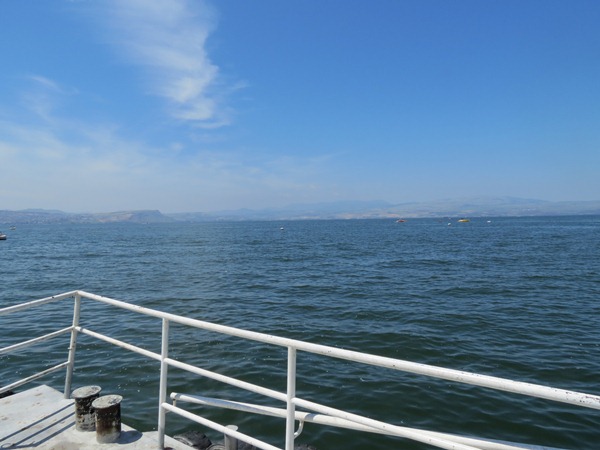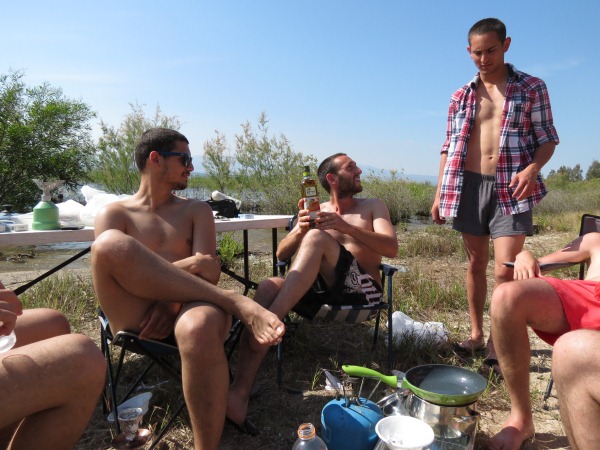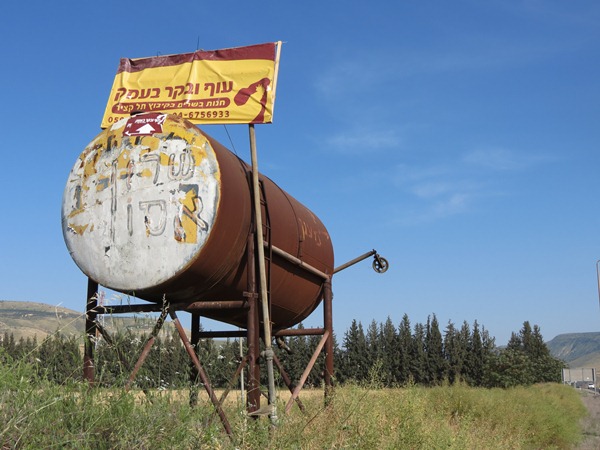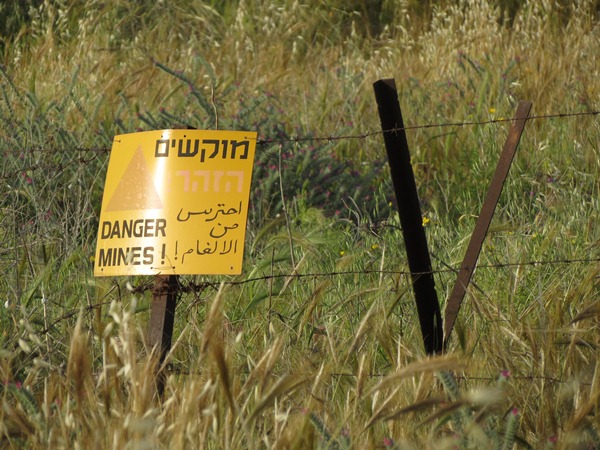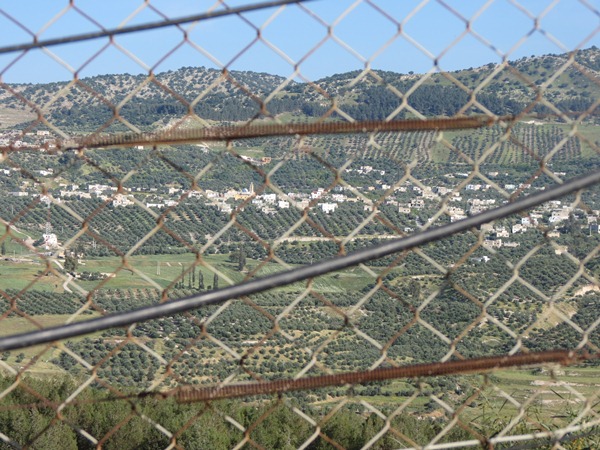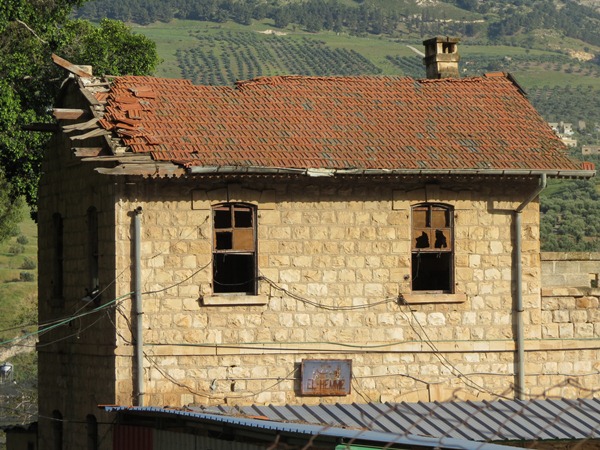From Gonen to Hamat Gader, via a demilitarized zone – childhood memories, some Galilee fish, some Roman nettle, and a debunked conspiracy.
For a couple of hours I hitchhike around the short-lived green paradise of the northern Golan, in the hopes of meeting the Israeli settlers (called in Hebrew by a different, less charged term than the one applied to West Bank settlers) and understanding who they are.
The option of returning the Golan to Syria is currently very much off the table, so I don’t even bother bringing this question up. Instead I try to figure out what the similarities and the differences are between these people and their brethren in Ariel or Kiryat Arba.
The most telling difference is found in the way they speak of their Arabic-speaking neighbours. “I love them to death!” cheers Avia, a sprightly twenty-something. “I used to work with the them at the Hermon ski resort. You’ll never believe the kind of conversations I had with the Druze girls. They would tell me absolutely everything!”
Older and more deeply rooted Golan settlers sound a tad less trusting towards their neighbours, but only a tad. The Golan is a place of coexistence, so much so, that at one point I forget conflicts exists in this world.
Just then conflict makes a surprise appearance. “What are you? Some sort of a leftist?” asks me the man who picked me up before the winding descent from the Golan and into the Hula valley. He takes an issue with the course I picked for my journey. Why, he wonders, if I chose to circumnavigate Israel, should he bring me back to the 1949 armistice line?
His difficulty is born of a memory, the collective memory of a community. The driver grew up in Kibbutz Gadot, which was habitually bombarded by Syria until Israel took over the highlands in ’67.
Gadot was established in 1949, just before the war’s end. Nascent Israel attempted to maintain territory by populating it, but success was only partial: the armistice agreement termed the area a “demilitarized zone,” a term which Israel and Syria each interpreted differently.
Gadot remained on the ground. Syria took offence and kept bombing. “The bombings were so bad we had to move the kibbutz 300 meters to the east,” the driver said. “Originally it stood directly on the Jordan”
“To the east? You mean closer to the mountain? But how would that have kept you safer?”
“It didn’t. It’s why so many houses were ruined, we had to rebuild the whole thing anew.”
The road winds between Gonen and Gadot, first running on the Israel-proper side of the line, then crossing into the demilitarized zone, which is still internationally recognized as such.
While winding along, I thought of a well known Israeli song. In its lyrics, a post-Six-Day-War Gadot mother makes a promise to her traumatized daughter. “There still are cannons on the mountain, my darling,” the mother sings, “but now they are aimed at Damascus.”
What a pitiful way to calm a child. why should there be cannons up there at all? No peace can exist while war persists. But enough of all that. I continue past Gadot and follow the roads down to the sea of Galilee, which, being a lazy typist, I shall henceforth name “the Kinneret.” In Kibbutz Hukuk, near the north of the Kinneret, lives my friend Danielle, and there I shall stay the night.
Danielle, a teacher, has a normal, modest kibbutz “room” of her own. These days, however, she’s dog-sitting in a flat that expresses nothing of kibbutz values.
I came to Hukuk picturing a communal holiday feast in a kibbutz dining room (tonight is the eve of Passover’s festive seventh day), and found a kibbutz that has been entirely privatized. It has no functioning dining room. Danielle fixes us a wonderful vegetarian dinner in the flat, and we eat it with over-sized, designer cutlery.
The following morning I head back to the road that skirts the Golan’s foothills and the young Jordan river. There’s a place here that I remember visiting as a child. It’s a large public picnic spot situated on the banks of the young Jordan, at a place where the river feeds the canals of old basalt-built water-mills.
Here’s me in the very same location, circa 1986, when there was less of a crowd and more of a flow. (Photo courtesy of my sweet parents, who located, scanned and mailed it to me upon request).
Just as I begin to indulge in the fun memories of childhood, I come across a sight that awakens a far more recent memory. The tents of vacation-makers form a cluster that recalls the past, rebellious summer, the summer that rose to its climax and then faded away while I was on my September journey, the social justice summer, the “New Israel” summer, the summer of tents.
I remember how at the time someone told me that the tents seemed to him suspiciously uniform. “Can’t you see?” he said, “They’re all silvery. They are the same. this is all orchestrated by someone.”
“I think silvery is really all that’s available in the stores,” I said, “my tent is silvery.”
“You’re naive,” the skeptic told me. I wish that he were by my side at this moment.
Last summer is now a faint memory, just like Gadot’s old trauma, and similarly, it’s more alive in some than in others: those who are determined to rekindle the flame this summer. Which memory will end up preserved more clearly in the nation’s collective psyche? Gadot may be it, at least until someone composes a song about tycoons and corrupt politicians who are now thankfully threatening Damascus.
With all due respect to national memories, I’m still thrilled by revisiting my childhood and choose as my next stop the fish restaurant of Kibbutz Ein Gev. This was the first restaurant in which I ever ate fish, though I remember it more strongly for living fish than for cooked ones. Ein Gev’s fish restaurant sits directly on the lake, allowing diners to throw pieces of bread to fishies below. The fishies would flock to catch the bread, causing a slightly scary stir in the water. My sister and I were thrilled by this at the time, and I’m more than ready to be thrilled again.
There’s no following the Jordan itself to its mouth, because its flow is guarded by tall rushes. Trying another route, I end up in one of the region’s overgrown savannas, the sort that become a thorny, buzzing inferno whenever summertime arrives.
At the moment, though, it’s still pretty quaint.
…That is, until I get lost and pretty much trapped in it. Why does this always happen to me? I was going to have some fish and feed some other fish. Why can’t I be like normal people and travel by road? People who took the road are already having fish, they’re having my fish before I can reach it.
It keeps getting worse. The brush grows taller and richer with thistles. I can hear somewhere the sweet buzz coming from the road encircling the lake, the lake, which is full of fish. I don’t like the sounds in the grass one bit. At least I am more or less directly on the old border, so if I die here of a snakebite I will have died in the line of duty.
Turns out I’m luckier than that, but not entirely lucky. The snakes don’t get me, but instead I walk myself into a small forest of Roman nettle (Urtica Pilulifera), some of them taller then myself. Beyond it is the road, and I reach it like a beekeeper who survived a mutiny.
Soon enough however, there’s compensation on my plate. A part-fried, part-grilled St. Peter’s fish. Fishing in the Kinneret is currently forbidden, in an attempt to revive the fish population. So this is a farm fish, but it’s great.
Ein Gev’s docks have developed since my childhood, but my childhood was so recent… On the wall is a memory of those docks in truly bygone days. This kibbutz was founded in 1937. It later spent the 19 years between the two key wars in a demilitarized zone, like Gadot. But while Gadot could be reached directly from the Hula valley, Ein Gev was isolated on this side of the lake. It took guts to live here at the time, and those guts got repaid in later years, when Ein Gev began to flourish and attract tourism.
Everything today seems to draw towards the past. What could be the reason for this. Is the ancient lake causing this effect? What is it trying to tell me?
A short ways south of Ein Gev, I bump into a group that seems somewhat less interested in the past, at least for the day. They’re all soldiers on holiday leave who went to the same high school, and they’re all fairly drunk already. They play the guitar and sing and scare away a couple that settled nearby hoping for romantic peace. While the couple packs. I offer the guys a song, and play an intentionally crass tribute to Avigdor Lieberman.
The song is based on Irishman John Maguire’s forgotten protest anthem: “Hey Ronnie Reagan / I’m black and I’m pagan / I’m gay and I’m left and I’m free.” When adapting Maguire’s ode to Hebrew, Ruthie and I exchanged “pagan” for “draft dodger.” Once the song ends all five challenge me on that one word, demanding to know whether I really was one, back in my day. I can think of more than one culture in which another word would be the one to stir unrest, namely: “Gay.”
Strange place, this Israel.
The guys make pleasant company, but I still need to travel a bit further down memory lane, past the water tank that remembers Ariel Sharon as prime minister (the graffiti reads: “Sharon is a disaster” – probably alluding to his disengagement plan).
East, along the southern limit of the Golan Heights, where even the hills don’t have the privilege of forgetting the war of 1973.
To a place that smells strongly of sulphur: a hot, strange but wonderful place, sandwiched between the mountains of the Golan and those of a country whose borders I haven’t yet skirted. It is the Kingdom of Jordan, and it looks wonderful through the various fences.
Maybe every road in Israel is memory lane, maybe every object is charged with a history of some sort, but the mineral springs of Hamat Gader, half surrounded by the border fence, and half by forbidding cliffs, is where the sidewalk ends, and has an ends-of-the-earth feeling to it. To the south rise the Golans hills, brown here, and barren. To the north are fruit groves sloping endlessly down an enormous Jordanian mountain, bearing an overly perfect little village. It’s no wonder this place brings to my mind one of Dali’s visions of the subconscious: If memory was an animal, this would have been its natural habitat.
You guessed it. The site of the springs (Al-Hemma in Arabic) was and still is located in what should be a demilitarized zone. But here, focusing on recent history would be missing the point. In this dramatic valley of the Yarmouk river, the rich Yarmouk civilization flourished no less than 8000 years ago, leaving us with intricate artifacts like decorated pots and goddess statuettes, which all attest to a highly developed culture. Later, every other dreamable civilization advanced into the valley when its turn came to bathe in the healing hot water.
As I near the gates of the current, modern pool complex, I pass something the I have never noticed here before. It is a train station, still bearing the metal sign with the name “Al-Hemma” in Latin and Arabic script.
Not only does Hamat Gader remember the Yarmouk civilization. Not only does it remember the Romans (their bath complex still rises impressively over the Israeli one). Not only does it remember the Syrians (a minaret towers above the treetops); it remembers the Ottomans, whom I have completely forgotten. It remembers the Haifa-Damascus railway, defunct now for so long. It remembers the conductor’s whistle and the snacks eaten in the different compartments. Yes, the building is now a warehouse of some sort, but it is still waiting patiently for a train, and one day, that train may come.
In the land of memory, one cannot stay out of the game. My childhood memory is not enough, I must take part in grander remembering. The national, collective memory causes me discomfort for all its political distortions, but there is another strand of memory, that of my culture and of my language.
I head back to the very south of the lake, near where the Jordan reemerges and continues to flow southbound. Here, among the Eucalyptus, is a small graveyard.
The grave I seek here is old and rather unusual. It belongs to Rachel Bluwstein, who arrived here from Odessa in 1909, at the age of 19, and worked in agriculture, in the budding Jewish settlement of Kinneret. Her poetry written in Hebrew, draws beautifully on French imagism and produces an irresistible and frank document of a unique time and place. I am here in this place, but not in that time, so I open the small metal container attached to the headstone, take out the book of collected poems that’s kept there, and read one.
There – the Golan’s mountains, Reach your hand and touch them
In confident silence they commend you: stop
In radient solitude, grandfather Hermon sleeps
And chill blows off of the white crest.
There on the shore, is a palm, its head bent,
And its hair is like that of a playful child
That slid down to the waters of Kinneret,
And stands there cooling his feet.
So many flowers cover the wintery meadow.
Blood of poppy, spots of crocus
On some days the green is seven times greener
And the blue sky is blue seventy-fold.
Even should I Lose all, and walk with my back bent
And my heart was to be mislead by strangers
Could I ever betray you, could I ever forget
The gift you gave me in my youth?
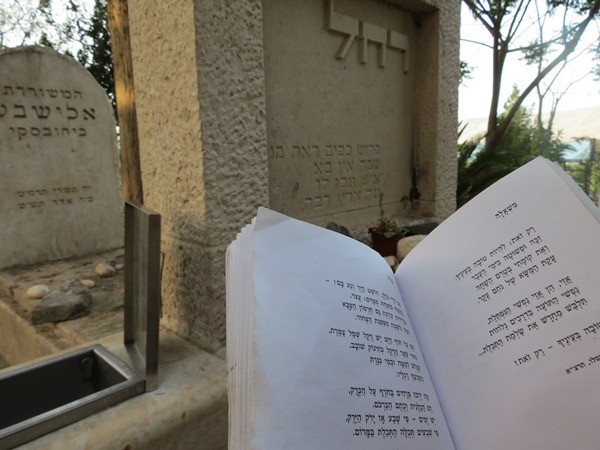
_______________________________________
The Round Trip thus far!
Thanks for reading and taking part in the adventure. All writing on this site is done voluntarily, so if any of you would like to pitch in directly for my travel expenses, please click here or on the “donate” button at the top of this page to do so. I’m deeply grateful to those who already donated. Thank you so much! This project would be impossible if not for you.
Relive the first two journeys:
The September Journey
The Christmas Journey


